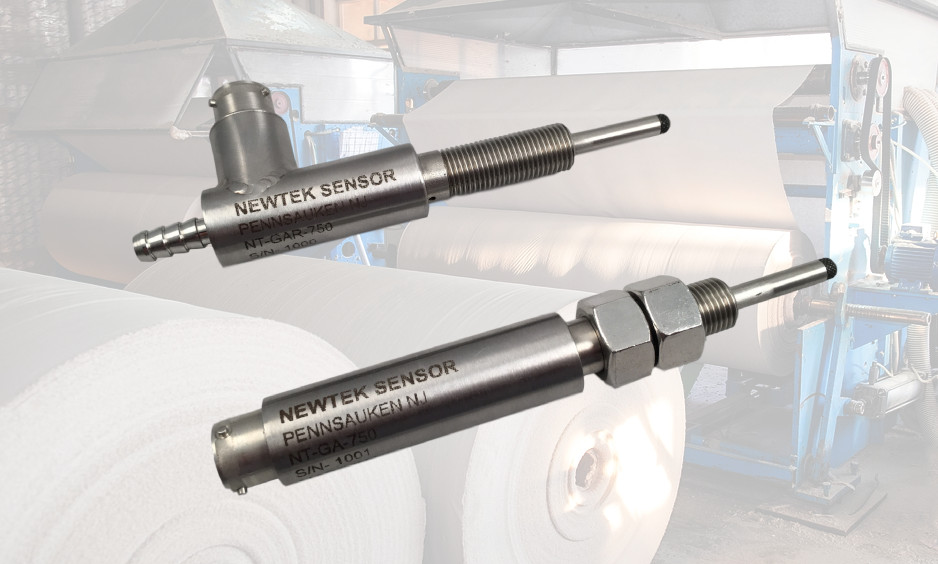NewTek Spring-Loaded LVDTs are used for surface measurement of paper, rubber, paneling and other materials as part of quality control processes in sawmill, wood processing, paneling, rubber, and automotive production plants. Outfitted with precision wheels and other accessories for active monitoring of materials along a line or conveyor, the Spring-Loaded Gage Heads are mounted at different points of the manufacturing line to make multiple contacts of a product surface in precisely measuring its thickness, flatness and other surface parameters. Data collected from the gaging probes enables operators to monitor a product profile for abnormalities or an out-of-tolerance spec.

NewTek Spring-Loaded LVDTs feature a stainless-steel probe assembly and hermetically-sealed construction that enables operations in harsh industrial conditions such as exposure to water, sawdust, flying chunks of wood, and other debris. The gage heads also perform over wide operating temperature ranges (-65°F to 185°F) with linearity of ±0.15% of full range.
Offering high repeatability, the LVDT gage heads provide highly reliable output for over one million cycles with near-zero drift. Available in measurement ranges of ± 0.04 to ± 2 inches, the Spring-Loaded Gage Heads are available in a variety of custom options including right-angle connectors, temperature ranges up to 400°F (200°C), mild radiation resistance to 30 MRad and pneumatic probes.
NewTek Spring-Loaded LVDTs are offered with AC, DC voltage, or 4-20 mA current outputs. The AC-operated LVDT gage heads are ideal for operation in higher temperatures as the sensor is segregated from the electronic circuitry. When paired with a NewTek NTC-6000 LVDT Signal Conditioner, the AC-operated LVDTs deliver position feedback in a 4-20mA, 0-5V, 0-10V, or RS-485 formats for process control systems requiring digital output.
DC-operated LVDT gage heads are ideal for operation in less hostile environments as they eliminate the installation and cost of signal conditioning equipment. With electronics built into the assembly, the sensor simplifies mechanical set-up into automated machinery.
Check out the video at https://www.youtube.com/watch?v=dU4b_fEEI3c that demonstrates how NewTek Spring-Loaded LVDTs identify when parts in an automated production line are out-of-tolerance. Data is sent to a PLC that provides an alarm to operators.